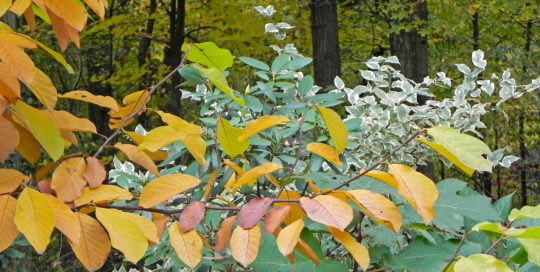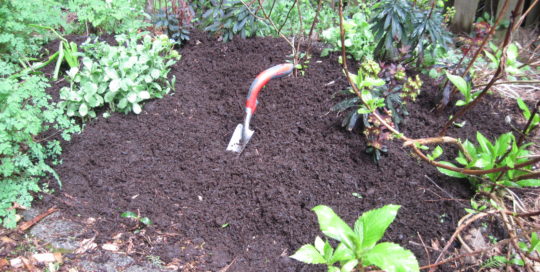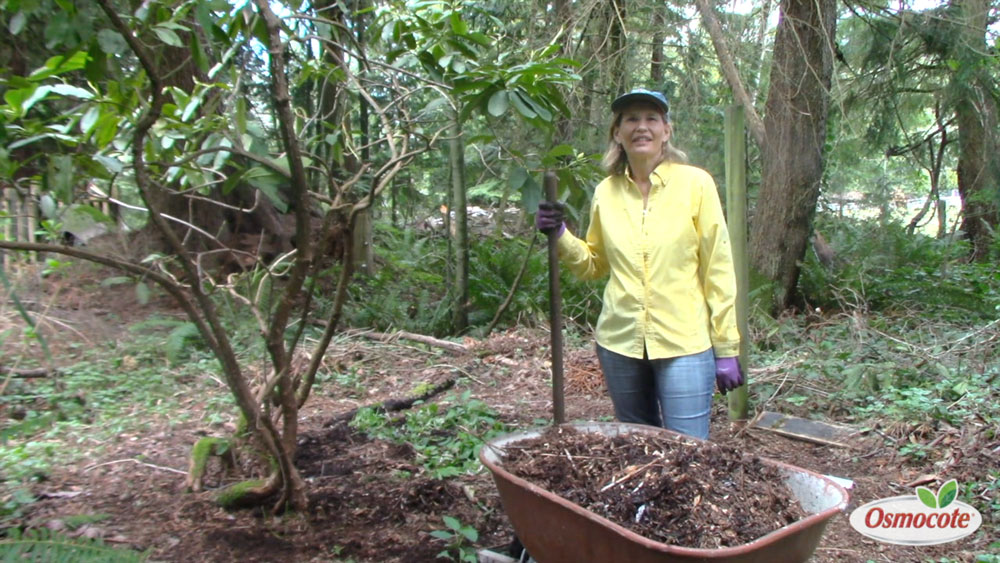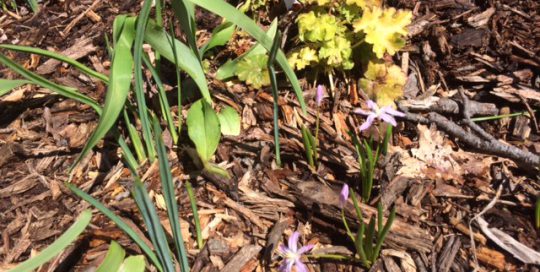How to Mulch
Never pile mulch on top of perennials, especially on their crown, which is where plant stems and roots meet and new growth forms. Covering this area with mulch can trap water and cause rot. So do I go around and sweep the leaves off my perennials in fall? I don’t remove any leaves except those of my Magnolia ‘Pink Charm’, which are so large and leathery that leaving them would cut off air circulation and promote rot.
Now that we’ve been schooled on the freeze-thaw cycle and the damage it wreaks on roots, there are other dramas going on underground in winter. After the ground freezes, a plant’s roots cannot take up moisture. That would normally be fine, but it’s a different scenario in the case of evergreens. According to H. Edward Reiley in Success with Rododendrons and Azaleas, winter mulch on azaleas and rhododendrons can prevent soil from freezing deeply, allowing some plant roots to pick up moisture. You can apply coarse materials like oak leaves and pine needles three inches deep, make sure to keep any mulch a few inches away from the main stem of the plant. Since there are no feeder roots so close to the stem, drying of the soil is not an issue.
Landscaping
Because conifers are also evergreen (they retain green leaves throughout the year), give them a similar treatment in late fall. The New York Botanical Garden recommends a one to three inch layer that should not touch the base of the conifer. Composted bark and shredded leaves are two good mulch options.
An excellent resource comes from a 2018 journal report of the National Association of County Agricultural Agents, which deconstructs common myths about landscape trees, complete with photos, explaining proper methods for planting, pruning, staking and mulching landscape trees.
Make sure to mulch when it’s cold enough to necessitate wearing gloves and even winter boots. Don’t wait too long, though, because it’s impossible to mulch over snow. Think of mulch as the last tuck in for your garden’s long winter nap. Hardy plants’ roots should be sufficiently cold tolerant to survive the winter, but the peace of mind that a layer of mulch provides heightens our anticipation of uncovering healthy plants come springtime.
Related Blogs
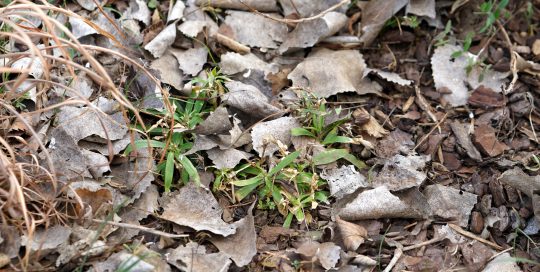
While potentially helpful to birds, mulching with leaves can cause a problem
Read this post

